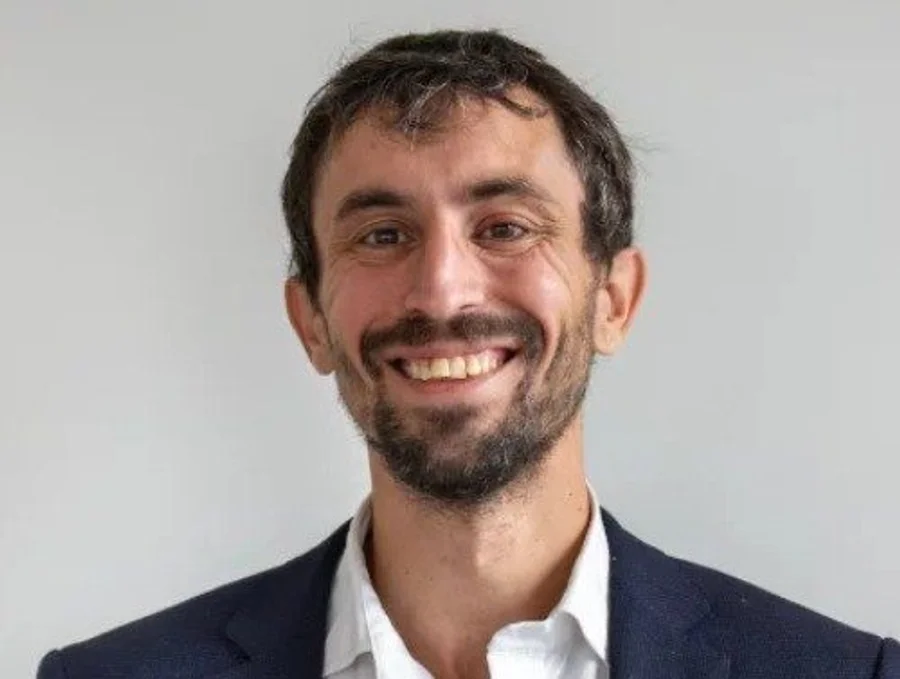
The tech giant's ambitious pursuit of artificial intelligence comes with a hefty environmental price tag. Microsoft has witnessed its carbon emissions surge by nearly 30% since 2020, primarily driven by massive AI infrastructure investments. Yet the company isn't retreating from its climate commitments, instead doubling down on innovative carbon removal strategies that could reshape how corporations address their environmental impact.
In a landmark move this June, Microsoft secured a 12-year agreement with Agoro Carbon for 2.6 million soil-based carbon removal credits. This partnership represents one of the largest and most enduring soil-based carbon deals in the voluntary carbon market, signaling a sophisticated approach to offsetting the environmental costs of AI expansion.
Key Facts: Microsoft's Carbon Challenge
- Carbon emissions increased 29.1% between 2020 and 2024
- $80 billion planned investment in AI data center infrastructure for fiscal 2025
- 22 million tonnes of carbon removal credits secured in 2024 alone
- 96% of Microsoft's carbon footprint comes from scope 3 emissions
- 2030 target remains carbon negative despite AI challenges
The AI Emissions Dilemma
Artificial intelligence demands unprecedented computing power, and Microsoft's $80 billion investment in data center infrastructure for fiscal 2025 reflects this reality. The company's emissions trajectory has shifted dramatically, with AI operations contributing significantly to a 29.1% increase in carbon output since 2020. This surge presents a formidable challenge to Microsoft's ambitious goal of becoming carbon negative by 2030.
The environmental impact extends beyond direct energy consumption. Microsoft's scope 3 emissions, which account for over 96% of its total carbon footprint, include manufacturing hardware, supply chain operations, and capital projects. As AI models become more sophisticated and data centers expand globally, these indirect emissions continue to compound.
However, Microsoft's leadership views this challenge as an opportunity for innovation rather than retreat. The company has accelerated its carbon removal investments, recognizing that technological advancement and environmental stewardship must progress hand in hand.

Agoro Carbon: Pioneering Soil-Based Solutions
Agoro Carbon, an initiative by Yara International, represents a new frontier in carbon removal technology. The company collaborates with American farmers to sequester carbon through advanced agricultural practices, creating a win-win scenario for climate action and agricultural productivity. Their approach utilizes the Verra VM0042 methodology, known for its stringent measurement and verification standards.
The partnership with Microsoft extends beyond simple carbon credit transactions. Agoro Carbon provides comprehensive agronomic support to farmers, facilitating the adoption of regenerative practices that enhance soil health, improve crop yields, and build long-term resilience. This holistic approach addresses multiple environmental and economic challenges simultaneously.

"This agreement with Microsoft is the strongest endorsement of our quality-driven, farmer-focused approach to soil carbon sequestration. We’re working with farmers and ranchers — offering hands-on support from our agronomists to ensure they achieve meaningful, long-term outcomes."
— Elliot Formal, CEO of Agoro Carbon
Microsoft's Strategic Carbon Portfolio
Microsoft's carbon removal strategy extends far beyond soil-based solutions. The company has assembled a diverse portfolio of carbon removal technologies, including:
- Biochar production — Converting organic waste into stable carbon compounds
- Bioenergy with carbon capture and storage (BECCS) — Combining renewable energy generation with carbon sequestration
- Direct air capture — Mechanical systems that extract CO2 directly from the atmosphere
- Reforestation projects — Natural carbon sequestration through forest restoration
This diversified approach reflects Microsoft's understanding that no single technology can address the scale of carbon removal required. By investing across multiple solutions, the company hedges against technological risks while accelerating innovation across the sector.
| Carbon Removal Technology | Permanence | Scalability | Cost Range |
|---|---|---|---|
| Soil Carbon Sequestration | Medium (10-50 years) | High | $50-200/tonne |
| Direct Air Capture | Very High (1000+ years) | Medium | $400-1000/tonne |
| Biochar | High (100-1000 years) | Medium | $100-500/tonne |
| Reforestation | Medium (20-100 years) | High | $20-100/tonne |
Industry Leadership and Market Impact
Microsoft's aggressive carbon removal purchasing has positioned the company as a market leader, with nearly 22 million tonnes of removal credits secured in 2024 alone. This volume exceeds the combined total of the previous four years, demonstrating the company's commitment to scaling up carbon removal markets.

"Agoro Carbon's approach to soil-based carbon removals reflects the kind of scientific rigor and long-term solution we look for in our carbon removal portfolio. This agreement supports our broader sustainability goals at Microsoft, including support of scalable, agriculture-based climate solutions that deliver measurable impact over time."
— Brian Marrs, Senior Director of Energy Markets at Microsoft
The company's approach goes beyond simple purchasing. Microsoft invests heavily in due diligence, employing technical partners for comprehensive project assessments that include site visits and detailed impact analysis. This rigorous vetting process helps establish quality standards across the carbon removal industry.

>> In Other News: Preliminary agenda released for 2025 North American SAF Conference & Expo
Challenges and Opportunities Ahead
While Microsoft's carbon removal strategy demonstrates innovation and commitment, significant challenges remain. The permanence of soil carbon storage faces scrutiny from environmental scientists, who question whether sequestered carbon can remain stable over decades. Climate events, changing land use, and agricultural practices can potentially release stored carbon back into the atmosphere.
Additionally, the scale of Microsoft's AI expansion continues to outpace carbon removal efforts. The company's $80 billion infrastructure investment suggests emissions may continue growing faster than removal capacity in the short term. This dynamic creates pressure to accelerate both technological efficiency improvements and carbon removal deployment.
However, these challenges also present opportunities for breakthrough innovations. Microsoft's investments are driving technological advancement across the carbon removal sector, potentially reducing costs and improving effectiveness. The company's market leadership encourages other corporations to follow suit, creating a positive feedback loop for climate action.
The Path Forward
Microsoft's partnership with Agoro Carbon represents more than a business transaction; it embodies a vision of technology-enabled environmental stewardship. By combining cutting-edge agricultural science with robust verification protocols, the collaboration demonstrates how corporations can address climate challenges while supporting economic development.
The 12-year timeline of the agreement provides stability for farmers adopting regenerative practices and creates predictable revenue streams for sustainable agriculture. This long-term commitment approach could become a model for other corporate climate initiatives, moving beyond short-term offsets toward systemic change.
As AI continues reshaping our digital landscape, Microsoft's carbon removal strategy offers a blueprint for responsible technological advancement. The company's willingness to invest heavily in diverse carbon removal technologies, while maintaining rigorous quality standards, demonstrates that environmental responsibility and innovation can advance together rather than in opposition.
Subscribe to the newsletter
Daily decarbonization data and news delivered to your inbox
Follow the money flow of climate, technology, and energy investments to uncover new opportunities and jobs.
Latest issues
-
The Three-Continent Move That Redefines SAF
Wishing everyone a restful holiday season.🎄🎅🎁 Inside this Issue ✈️ Cathay Goes Global With SAF in Three-Continent Fuel Deal 🧪 Proton Ventures Partners With Barents Blue For Realization Of The Bar...
-
Can One Truck Fix Hydrogen’s Biggest Problem?
Inside This Issue 🚛 Alberta's Shared Truck Model Could Crack Hydrogen Adoption ✈️ ZeroAvia Completes Financing Round 🌾 Frontier And NULIFE Scale New Biowaste Carbon Removal Approach 🔥 WAGABOX® Of ...
-
North America’s Carbon Removal Year in Review: Winners, Losers, Surprises
Inside This Issue 🌎 North America's Carbon Removal Year in Review: The Deals, Policies, and Milestones That Shaped 2025 🚢 Hapag-Lloyd And North Sea Container Line Win ZEMBA Second E-Fuel Tender 🪨 ...
Company Announcements
-
ClimeFi Announces New 85,000 Tonne Procurement Round
In its latest procurement round, ClimeFi has enabled more than US$18m in durable carbon removal purchases across eight removal pathways: Biochar, Bioenergy with Carbon Capture and Storage (BECCS), ...
-
Vallourec, a world leader in premium seamless tubular solutions, and Geostock, a global specialist in underground storage of energy, have signed a Memorandum of Understanding (MoU) to strengthen th...
-
CMA CGM, DHL Step Up Ocean Freight Decarbonization with Biofuel Deal
DHL Global Forwarding and shipping group CMA CGM have agreed to jointly use 8,990 metric tons of second-generation biofuel to reduce emissions from ocean freight. The initiative is expected to cut...
-
Next-Generation Gas Turbine Control System For Thermal Power Plants Completes Functional Testing
Integration of Mitsubishi Power's control technology with Mitsubishi Electric's high-speed data processing technology Supports rapid load adjustments and diverse fuels including hydrogen Tokyo, ...